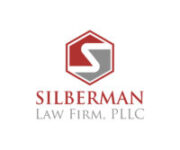
Trademark infringement occurs when a party uses a mark that causes confusion with another legally protected trademark. To successfully pursue a claim, the following elements must be proven:
1. Valid and Legally Protectable Mark
The plaintiff must show that the trademark is legally valid. This can be established by federal registration through the U.S. Patent and Trademark Office (USPTO) or by demonstrating common law rights from using the mark in commerce.
2. Ownership of the Mark
The plaintiff must prove that they own the trademark. Ownership is established either by federal registration or by proving prior use of the mark in business.
3. Likelihood of Confusion
This is often the most contentious and critical element in trademark disputes. The plaintiff must demonstrate that the defendant's use of the mark is likely to cause confusion among consumers about the source of the goods or services. Courts generally assess this likelihood of confusion by looking at factors such as:
- Similarity of the Marks: How similar are the two marks in appearance, sound, meaning, and overall impression?
- Relatedness of the Goods or Services: Are the goods or services offered by the plaintiff and defendant related or in the same industry?
- Consumer Base and Channels of Trade: Do the plaintiff and defendant target the same customers or sell through similar channels?
- Strength of the Plaintiff's Mark: Stronger, more distinctive marks (such as fanciful or arbitrary marks) are afforded greater protection.
- Intent of the Defendant: Did the defendant knowingly use a confusingly similar mark to capitalize on the plaintiff's goodwill?
4. Harm or Damage
The plaintiff must show actual or potential harm, such as lost sales or damage to reputation.
The Lanham Act
The Lanham Act is the primary federal statute that governs trademark infringement in the United States. It provides the legal framework for trademark registration and sets out the criteria for infringement claims. Under this law, both registered and unregistered trademarks can be protected, though registered trademarks enjoy broader, nationwide rights.
One of the most important aspects of the Lanham Act is its emphasis on preventing consumer confusion in the marketplace. The statute allows trademark owners to file lawsuits against parties that use marks likely to deceive consumers or cause confusion about the origin of goods and services.
Conclusion
Trademark infringement claims require careful consideration of several legal elements, particularly the issue of consumer confusion. Whether under common law or federal registration, trademark owners must take active steps to protect their brands by ensuring their marks are distinctive and by monitoring the market for potential infringements.
All information provided on Silblawfirm.com (hereinafter "website") is provided for informational purposes only, and is not intended to be used for legal advice. Users of this website should not take any actions or refrain from taking any actions based upon content or information on this website. Users of this site should contact a licensed Texas attorney for a full and complete review of their legal issues.
